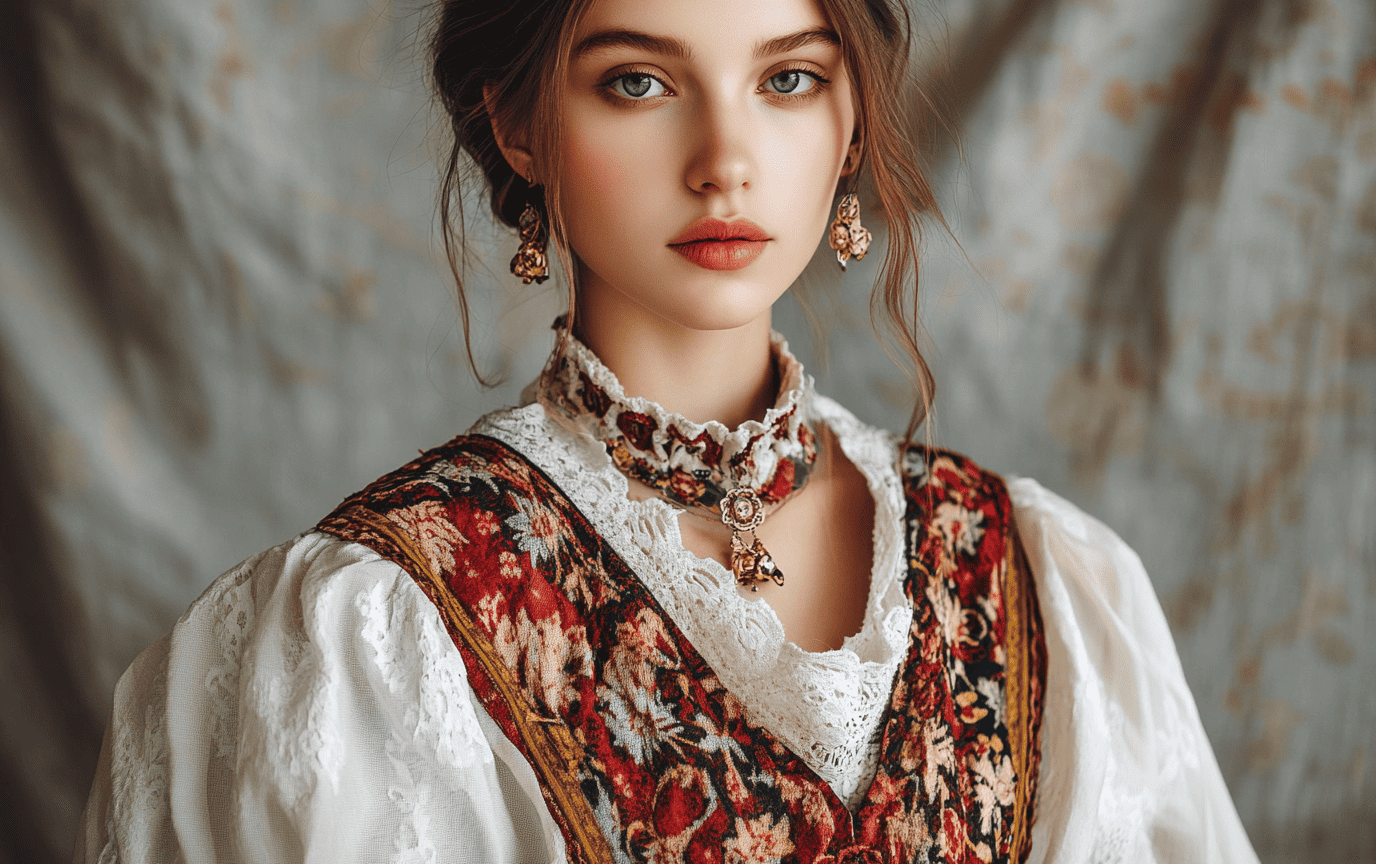Embrace the World: A Journey Through Traditional Attire
Traveling teaches us many things—history whispers in cobblestones, flavors dance like fireflies in twilight, and conversations turn strangers into friends. Yet, one of the most riveting chapters of travel unfolds in the fabrics and stitches of traditional clothing. Imagine walking through vibrant street markets, where garments speak stories of peoples rooted in rich culture and identity. Would you dive into the meanings behind the colors and patterns of the dashiki or the elegance of the cheongsam? In this journey, we will explore the deep connections of traditional attire to history, culture, and modern life, making every thread a vibrant part of our collective story.
The Palettes of Time: History and Culture in Clothing
It’s often said that clothes make the man, but in many cultures, they reveal the heart of a society. Over the years, traditional garments have evolved through empires and revolutions, bearing witness to the tides of time. When I stood among the ancient ruins of Rome, I was in awe as I pictured the senators swathed in their elegant togas—symbols of power and status, meticulously draped to speak volumes without uttering a word.
In ancient Sumer, the Kaunakes, a woolen skirt-like garment, denoted social stratification. Just picture it: a bustling market where the lengths of skirts dictated not only fashion but also one’s place in society. Talk about cutting cloth according to rank! It’s incredible how something so simple, a length of fabric, could embody such depth. Isn’t it fascinating how clothing has always been more than mere fabric?
From North to South, the narratives weave through the kimono of Japan, representing grace and poise, to the kilt in Scotland, resonating with rugged heritage. Each outfit tells the tale of its people, shaped by climate, resource availability, and cultural significance—an unbroken thread in the fabric of humanity. What stories do you think your clothes tell?
A Cultural Mosaic: Clothing’s Spiritual Significance
But traditional clothing is not just about history; it is an intricate tapestry of storytelling. In Native American cultures, clothing becomes akin to a living art form. The colors, patterns, and materials used reflect the wearer’s journey, family history, and cultural narratives. Picture the vibrant ceremonial shirts adorned with feathers that carry the significance of identity and spirituality. I once attended a Powwow where each garment was not just a visual feast but an invitation to learn—their wearers transformed the very fabric into personal heirlooms that echoed ancestral pride.
Traveling through India, the elegance of the sari captivated my senses. Wrapped in a single piece of cloth, each drape tells a different story, is tied to a different region. From the colorful patterns of Gujarat to the silk weaves of Varanasi, these dresses are a kaleidoscope of heritage and artistry. The sari is more than just attire; it’s a tradition, a statement, a celebration of womanhood.
Dressing for the Present: The Evolution of Traditional Attire
As we drift through time, we see traditional clothing morphing—responsive to the pulse of changing societies and global influences. With the advent of globalization, the beautiful cheongsam transitioned from its loose origins to a sleek silhouette, blending traditional Chinese elegance with modern fashion sensibilities. When I slipped into one at a local boutique, I felt history caressing my skin. Each stitch seemed to whisper secrets from days gone by, the eyes of my ancestors shining brightly in the fabric.
Yet, this evolution is not merely an adoption of style; it’s a dialogue between cultures. The infusion of glass beads and silk ribbons in Native American attire symbolizes the blending of traditions, adapting to new circumstances while still honoring the roots. Have you ever worn something that felt like a hug from history?
Traditional Garments in the Modern World
Interestingly, as we trend into the realm of neon lights and fast fashion, traditional attires have not lost their charm. Instead, they’ve emerged as a counterculture, a fierce reminder of who we are and where we came from. During festivals, you will find hanboks in Korea elegantly swaying with grace, or women clad in saris lighting up joyous celebrations with color and tradition. It’s inspiring to see the younger generations donning ancestral clothing, blending the old with the new, creating a personal style that carries the essence of heritage.
Yet, at times, it raises questions about authenticity and appropriation. When does inspiration cross into misrepresentation? As travelers, we must remain respectful, understanding that these garments carry the weight of history and cultural significance. Pulling on a dashiki for a festival might be a joyous occasion, but it is vital to recognize the layers of meaning woven into it.
Lifehacks: Navigating the World of Clothes
Now that we’ve woven through history, culture, and evolution, let’s smoothly glide into some practical lifehacks. These tips will help you appreciate the beauty of traditional clothing without feeling lost in the fabric store.
1. Research Before You Dress
Every region’s clothing has a story to tell. Before visiting a country, familiarize yourself with traditional attire. This knowledge not only prepares you for cultural interactions but shows respect for the rich tapestries of history that clothing embodies. Ever attended an event in a cultural outfit without knowing its significance? It’s an awkward misstep that every traveler wants to avoid.
2. Opt for Versatility
In packing for your travel escapades, look for clothing that can transition between settings. A multi-way scarf or a lightweight wrap can be transformed from a beach cover-up into an elegant evening piece. Your travel wardrobe should be as versatile as it is vibrant!
3. Support Local Artisans
When in the market for traditional clothing, always consider purchasing from local artisans. The joy of wearing an authentic piece of clothing, intertwined with genuine craftsmanship, creates a more profound connection. If you come across an artisan selling embroidered textiles, don’t hesitate! Take the plunge—bring a piece of culture home with you, dripping in history.
Scenic Landscapes: Clothes That Love Adventure
As we stroll through markets and local boutiques, our exciting travels also lead us to picturesque landscapes where traditional garments flourish. From the lush valleys of Bhutan to the colorful festivals in Thailand, the backdrop of scenic beauty amplifies the allure of cultural attire.
Imagine wandering through the terraced rice fields of Bali, an elegant Bali kebaya billowing gently in the breeze, mirroring the dance of the lush greenery around you. Each glance around reveals a relationship between the people and their environment; the vibrant attire resonates with the colors and essence of the earth.
In Andean regions, ponchos serve not only as warm coverings but as a true show of heritage, seamlessly blending with the towering peaks that cradle them in the embrace of nature. Each landscape invites you to lose yourself in the beauty of the moment, a memory etched in both scenery and attire.
Conclusion: Threads that Bind Us
As our journey wraps up, it becomes clear that traditional clothing is a narrative threaded through time, culture, and community. It’s the silent ambassador of history, bridging spaces where words couldn’t tread. Each time we embark on a new adventure, we have the opportunity to don the attire of another culture, celebrating the beautiful mosaic of humanity.
So, dear friends, let’s celebrate our travels. Embrace the stories woven into the threads of every garment. Be curious about their meanings, respect their origins, and let those vibrant fabrics add color to your own journey.
Want to stay updated on the latest travel tips? Check out our Travel Tips section: Travel Tips. Looking for lifestyle inspiration? Explore our Lifestyle category, and discover amazing destinations: Destinations. Connect with us on YouTube, follow our adventures on Instagram, and find inspiration on Pinterest.
Live, travel, and remember to weave your own stories along the way. Safe travels, my adventurous friends!













